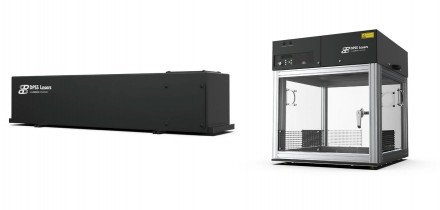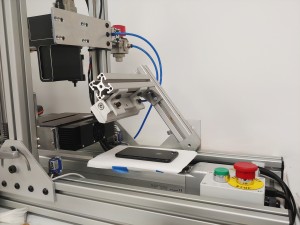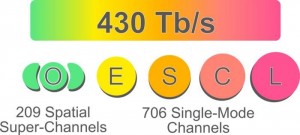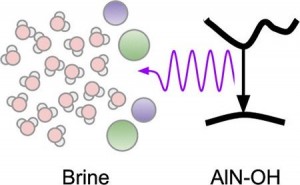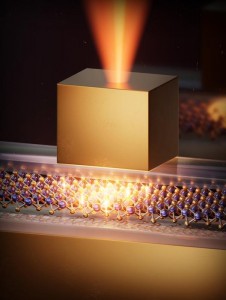
There was a distinct sense of déjà vu at this year’s Photonex trade show, held this week at the Ricoh arena in Coventry in the UK. Walking through the entrance to the show, you may have been forgiven in thinking that you had travelled back in time to 2013, because many of the exhibitors had booked their booths at precisely the same locations as they had the year before.
The sense of familiarity may have lulled some attendees into a sense that nothing much had really changed since last year, but delving deep into the show guide, it became clear that there were many exhibitors at the show that were demonstrating products and technologies worthy of some investigation.
The Novus Light editorial team set about discovering what nuggets of technological gold might be unearthed on the show floor.
Our first port of call was at the University of Glasgow stand, where we met Dr. Graham Gibson, a member of the Optics Group at the school of physics and astronomy, who explained that a team at the university had developed what they were calling a single pixel video camera.
While many of us may be familiar with the CMOS or CCD imagers using in conventional cameras, the imaging sensing technique employed in the single pixel video camera is radically different. In essence, the traditional detector array has been replaced with an array of micromirrors that reflect light from a scene onto a single pixel imager. Thousands of binary pixellated masks are then applied to the mirror array and, for each mask that is applied, measurements are made of the intensity of light that then falls onto the single imager. From those measurements, the spatial information of a scene can then be recovered mathematically.
For capturing visible images, Dr. Gibson admits that the novel technique may not be cost effective. However, where the technology comes into its own may be in applications where light in the non visible range need to be detected. Indeed, in a demonstration at the show, one incarnation of the single pixel video camera was capturing shortwave infrared (SWIR) images of a scene in the University of Glasgow booth (Figure 1). Dr. Gibson claimed that due to the low cost of the micromirror array, such an imaging system might cost less than $500.
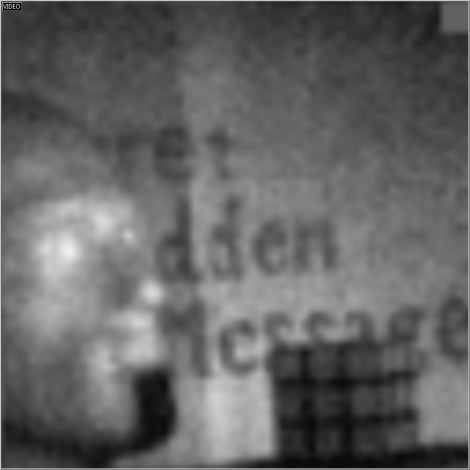
Figure 1: Shortwave infrared image captured by a single pixel video camera developed at the University of Glasgow.
We also stopped at the booth of an Australian research organization called NICTA (National ICT Australia) -- Australia’s Information Communications Technology ICT Research Centre of Excellence. On the NICTA booth, the company’s senior research engineer Dr. Nariman Habili explained that engineers there had developed a set of software tools for hyperspectral imaging called Scyllarus.
Named after a genus of slipper lobster with hyperspectral eyesight, the Scyllarus set of tools comprises a viewing and analysis tool called ‘Scyven’ (Scyllarus Visualisation Environment) that can inspect and analyze hyperspectral images to enable users to discover the spectral signatures present within them. For researchers, the package also includes a MATLAB toolbox with a number of image processing functions that can be used on the hyperspectral image data to recover specific properties. Lastly, a Scyllarus C++ API is also available to developers looking to integrate hyperspectral image processing into their own applications.
The Scyven visualization software itself can be used to recover information from a hyperspectral image. After pre-processing, or filtering a hyperspectral image of a scene, the illumination in the image can be automatically derived, and this in turn can be used to discover the reflectance properties of areas in the image. From there, material clustering can be performed to group those regions of interest in the image with specific characteristics, after which the results can be analyzed.
Dr. Habili explained that the Australian police force has already trialled the Scyven hyperspectral image analysis software in crime scene investigations to detect the presence and location of bodily fluids such as semen or blood on hyperspectral images of clothing (Figure 2). Having identified such fluids, DNA can then be extracted from the samples to identify potential crime suspects.
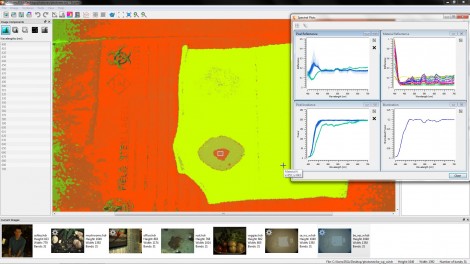
Figure 2: Software developed by NICTA has been used by the Australian police to analyze hyperspectral images of clothing to defect the presence of blood and semen. Shown to the right are the reflectance and illumination plots extracted from the image by the software.
At the Ocean Optics stand, Product Manager Henry Langston brought our attention to his company’s STS spectral sensing development kit, which was introduced in July this year. The kit comprises a choice of one of the company’s small lightweight STS spectrometers, a Raspberry Pi microcontroller board, and wireless capabilities to enable OEMs to control the spectrometer through a phone, tablet or computer web browser.
To bring developers up to speed quickly, Mr. Langston said that the kit comes with software that runs on the Raspberry Pi, enabling users to save raw spectral data from the spectrometer. A Web API has also been created to allow users to write PHP scripts to create their own applications to analyze the data once captured by the spectrometer.
To highlight one potential application of the kit, the company had fitted the key hardware components, and a lithium ion battery to power them, to a small unmanned aerial vehicle. Mr. Langston explained that such a drone could be fitted with any one of three of the company’s STS spectrometers to enable it to perform spectrometry in the UV (190-650 nm), visible (350-800 nm) and NIR (650-1100 nm) ranges at a resolution of ~1.5 nm. At a total payload weight of just 190g including the battery, the total cost of such a system is estimated to be around $1600, although additional gimbals may be required to prevent the drone’s movements during flight from affecting the stability of the readings from the spectrometer.
At the booth of Pixelteq, company representative Joris van Nunen was on hand to demonstrate a new camera that the company has developed to highlight its capabilities in depositing pixel-level spectral filters onto photo-detector arrays to achieve a tailored spectral response on each one.
The so-called PixelCam multispectral camera featured a 1920 x 1080 CCD pixel imager onto which Red, Green, Blue filters and Near Infra Red filters had been deposited, enabling the camera to simultaneously extract spectral information at visible and non-visible wavelengths. To illustrate its capabilities, the camera was set up to capture an image of a tray of coffee beans on the Pixelteq booth. The visible and NIR components of the image were then displayed on a monitor (Figure 3).
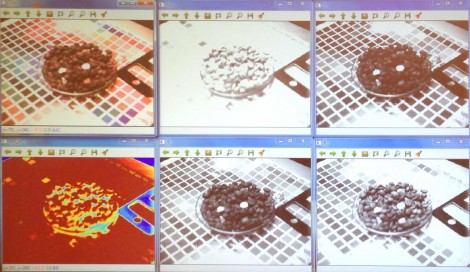
Figure 3: Pixelteq has developed a new camera that can simultaneously capture visible (Red, Green and Blue) and Near Infra Red (NIR) images. Top left to right: Composite RGB image, NIR image, Green component of the image. Bottom left to right: False color plot, Blue component of the image, Red component of the image.
The announcement of the new Pixelteq camera comes hard on the heels of an earlier announcement by camera maker XIMEA, who this year also unveiled several multispectral cameras they had developed in conjunction with imec, who also create unique imagers for the cameras by depositing narrow-band spectral filters onto silicon at a pixel-level. The subtle difference between the two is that while the Ximea cameras use Fabry-Perot interferometric filters, the Pixelteq cameras use multilayer dielectric filters, although the target market for both company’s cameras are similar.
Pixelteq also has a second PixelCam camera that the company has designed to capture images in three or four spectral bands between the Near Infra Red (NIR) and the Short Wave Infra Red (SWIR). Unfortunately this camera was not on display in the booth, b ut we learned that the imager deployed in that camera is an InGaAs device with a resolution of 640 x 512 pixels. Both the Visible/NIR and the PixelCam cameras sport frame rates of 30 frames/sec and can be interfaced to a PC via a CameraLink interface.
The editorial team at Novus Light was pleased to dig up these nuggets at Photonex, and we look forward to moving on to Vision 2014 in Stuttgart, Germany in just a few weeks.
Written by Dave Wilson, Senior Editor, Novus Light Technologies Today































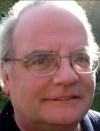
 Back to Blog
Back to Blog










